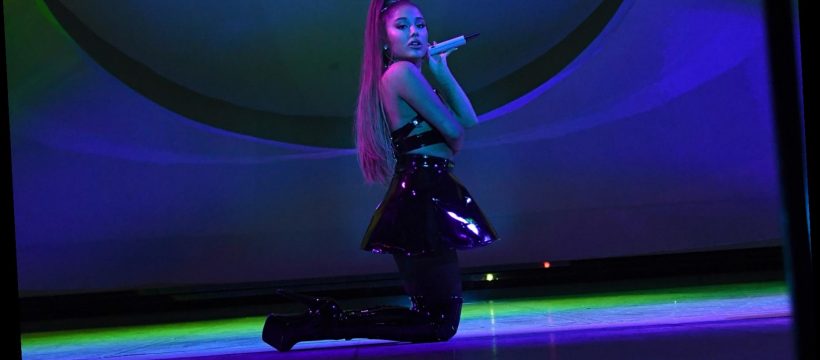Same song, different verse — quite literally, it turns out. On Monday (March 8th), the University of South California’s Annenberg Institute released its latest report on music creator demographics, finding that women still make up meager percentages of artists, songwriters, and producers on music charts and award-nomination slates, marking “no meaningful and sustained increase” in the number of female musicians in the male-governed music-making business in close to a decade.
The fourth annual report, conducted by USC’s Annenberg Inclusion Initiative with funding from Spotify, examined the gender and race of artists, songwriters, producers, and other creators across 900 top songs in the last nine years; across 2012 to 2020, women comprised a total 21.6% of all artists, 12.6% of all songwriters, and 2.6% of all producers. Researchers Stacy Smith, Katherine Pieper, Marc Choueiti, Karla Hernandez, and Kevin Yao parsed data from the Billboard Hot 100 year-end charts and the Grammy Awards’ major nominee lists to examine the paucity of female creators on an annual basis.
In 2020, despite a litany of corporate task forces and renewed industrywide vows out of the music business to reform skewed dynamics — exhibit A, exhibit B — the number of women in music in top songs dipped even lower than in 2019, the study found. From 2019 to 2020, female artists fell from 22.5% to 20.2%; female songwriters decreased from 14.4% to 12.9%; and female producers declined from 5% to just 2%. Producing positions consistently showed the most lopsided annual figures of all the measurements in the study — and across the nine-year sample, when searching for female producers of color in particular, researchers found a 180:1 ratio of non-white female producers to white male producers.
“It is International Women’s Day everywhere, except for women in music, where women’s voices remain muted,” Stacy Smith, a communications professor who founded the Annenberg Initiative 10 years ago and leads annual music report, said in a statement accompanying the report’s release. “Women producers — and particularly women of color — are virtually erased from the music industry.”
A cursory glimpse might yield the conclusion that female music creators are simply less skilled or productive than their male counterparts — but historical context and further data points suggest that this is not the case, and a more exclusionary dynamic is at play. For one thing, several individual female artists such as Nicki Minaj and Rihanna notch more hit songs than male artists like Justin Bieber and Ed Sheeran. Researchers also found that, in an industry already ruled by male executives, male music creators tend to work with the same male collaborators, limiting opportunities across the board. Of the 900 songs in the nine-year sample, for instance, 57.3% had only male writers, and less than 1% had only female writers.
In previous iterations, the report included a qualitative component that asked female musicians to describe their experiences in the various male-heavy fields, as well; Smith noted to Rolling Stone in 2019 that women’s common answers of facing harassment, discomfort, and discrimination illuminated how “being female is, in and of itself, a barrier facing women navigating the space.” She added that the “rinse and repeat” numbers out of the music industry each year stand in blunt contrast to the evolving demographics out of the movie industry. (Smith also conducts research on the on- and off-screen demographics of films, which, due in part to equality and inclusion initiatives, have both exhibited a more equal gender landscape in recent years.)
Dawn Ostroff, Spotify’s chief content and advertising officer, said in a statement with Monday’s report that USC Annenberg’s research has been “instrumental in broadening the conversations around gender equity issues” and that it’s clear there’s “still more work to be done in this area.”
Over the nine years of chart data studied, the report found that female artists were most prominent in pop (32%) and least prevalent in hip-hop/rap (12.3%).
USC’s new report did find that musicians of color are on the upswing in hit songs: Non-white artists, both male and female, rose from a low in 31.2% in 2013 to 59% in 2020, marking a 46.7% total across the nine-year sample.
Over on the red carpet, the report honed in on yearly nominees for the Grammy Awards’ five biggest categories — Record of the Year, Album of the Year, Song of the Year, Best New Artist, and Producer of the Year — and found that the number of female nominees also rose here, from lows of 7.9% in 2013 and 6.4% in 2017 to to 28.1% of nominees in 2021. But though the latest slate of Grammy nominees marks a high point for female artists, songwriters, and producers, the 2013-2021 average still sits at 13.4% women versus 86.6% men.
So when, if ever, will the music business begin to operate with a less startling gender ratio? There’s no neat panacea, but the USC researchers did point out in the study that solutions to large demographic imbalances in any industry “require pledge-takers who are intentional and accountable, and an industry that is committed to making change — something that clearly has not happened in this case.”
Source: Read Full Article
